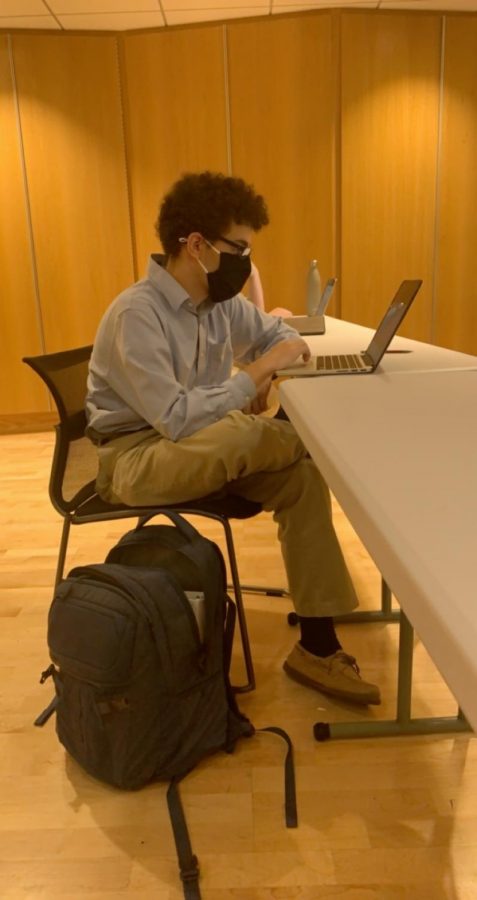Back to 45 Minutes: Why We Should Return to Our Old Schedule Next Year
Students have seen plenty of changes in this year’s classes, but the new class schedule is the most apparent
November 5, 2020
This year’s schedule is different than any schedule the Hunting Valley community has seen before. Due to the COVID-19 pandemic, we have made the switch from a rotating schedule of six 45-minute classes to a rotating block schedule of four 85-minute classes a day.
Given the many challenges posed by teaching and learning in a pandemic, it makes sense why we have such a schedule; University School’s foremost goal is to keep the school open and our community safe. To do this, the school needs to limit the potential spread of COVID-19 as much as possible. The new schedule, which limits the amount of interaction students have a day, is just another step in the process of keeping our school safe. However, when this pandemic is over, University School should see a return to the old schedule.
The first problem posed by this new schedule is that it is extremely hard to stay focused for the whole time. Some psychologists believe that the average student suffers attention lapses after only 10-15 minutes of class. This means that during a 85-minute period, students are likely to lose focus at least 5-7 times. This results in students not understanding their material as well as they could and having to ask for help far more often than they usually would. While by no means solving the problem completely, 45-minute classes would allow for a smaller number of mental lapses, allowing students to better absorb the material.
The block schedule also creates a great deal of inconsistency. While some days may be extremely packed, other days may be completely barren. If you have two study halls and an arts class in a day, that means you will probably have no homework at all. The next day however, you might have four core classes and a large amount of homework assigned. The inconsistency is not helpful for students, who may become overwhelmed by too many tests, projects, or assignments due in one day.
For those of us playing a sport, time is limited. During the season, projects and other obligations start to pile up, creating a lot of stress for a student athlete. The same issue applies to students taking part in clubs as well. If we change the amount of time for a class, students will have less stress, making them better both within and outside of the classroom.
The University School community seems to share this opinion. Recently, a poll was conducted in the school gauging opinion of the schedule change. Respondents ranked the change on a scale of 1-5, with 1 being highly unfavorable and 5 being highly favorable. Among students, 61% gave the new schedule system between 1 and 3. Among teacher voters, 43% listed between one and three. However, when I asked students directly, the answers varied. One student said that while “classes can get very boring, I like that when I have a project [I] have some extra time to work on it in our block.” Overall, though, the community consensus is best explained by another student, who said that “it is very hard to be in a class that long”.
Although school’s first focus is education, the social aspect of school is also extremely important. With 45-minute classes, you have an opportunity to interact with more people during more classes. While this is currently infeasible due to the pandemic, we should not discount the value of social interaction once the pandemic is over. University School is built on the idea of fraternization, and we should continue to foster that once it is safe to do so.
Although we have to have the current 4-class schedule for the foreseeable future, we should not become complacent with it. Like so many other aspects of life changed by the pandemic, this arrangement should only be temporary. In the absence of COVID-19, the benefits of shorter, more numerous classes are outweighed by any potential downside. Once it is safe and possible to do so, we should return to the old schedule.


Michael • Apr 14, 2021 at 2:50 pm
although i have 4 classes of 45 minutes, I think we should have 40 minutes of classes. If we have 40 minutes of classes, we have a chance of less disciplinary referrals. Look at Finland’s education system. They have very little homework, and that is only if you have something you didn’t finish in class. They start school at 7. If that’s so, why is it the best in the world (the education system)? Because students are less stressed in that environment. But in America, people start school at 5 (sometimes 4). 40 minutes of class makes it less likely for a student to burst out, “TEACHER!!! YOU FORGOT THE HOMEWORK (sorry for all caps lol). Kids will like school more with 5 periods of 40 minutes. That is all.